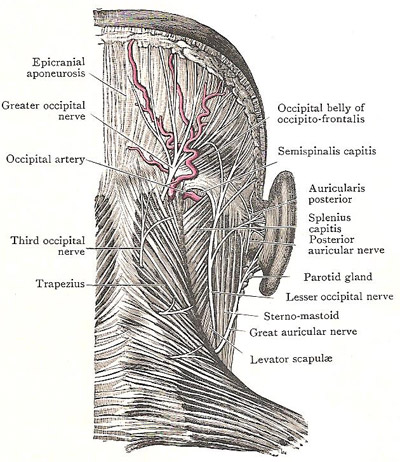neck

Superficial dissection of the back of the neck.
In vertebrates, the neck is the part of the body that connects the head and the trunk. In humans, it contains the seven vertebra of the spinal column, the larynx and pharynx to the front, and the great blood vessels and nerves running between the thoracic inlet and the base of the skull. At the root of the neck on each side is an outflow of nerves and vessels over the first ribs into the arms.
A cross-section of the neck shows the relative disposition of these structures. But whereas a section above the level of the sixth cervical vertebra shows the air and food passages as larynx and pharynx, at a lower level these have become the trachea and esophagus.
The primary structures of the neck are:


